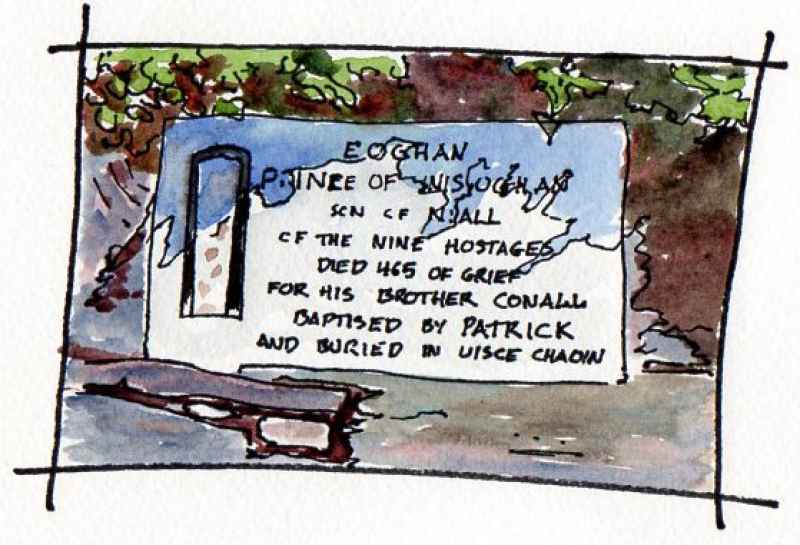Eskaheen is on a hillside overlooking Lough Foyle at the southern end of the peninsula. Translated as 'calm water’ reputedly because of a number of holy wells in the area, its ruined medieval church has a marble plaque on its gable. This records that it is the resting place of Eoghan -the prince who’s name is given to the peninsula. Tyrone - the land of Eoghan, was formerly the area eastwards, across the Foyle and south to the current county, but the closest part was incorporated in the new county of Londonderry at the time of the Ulster Plantation in the seventeenth century. His burial at this site is recorded in the Annals of the Four Masters.
|
|
|


